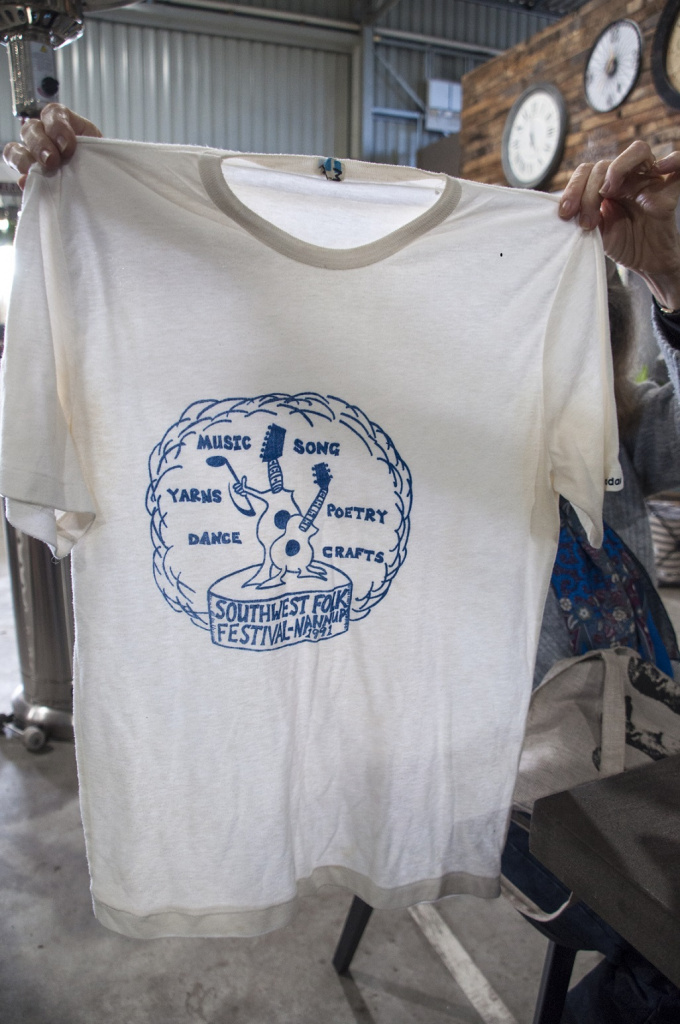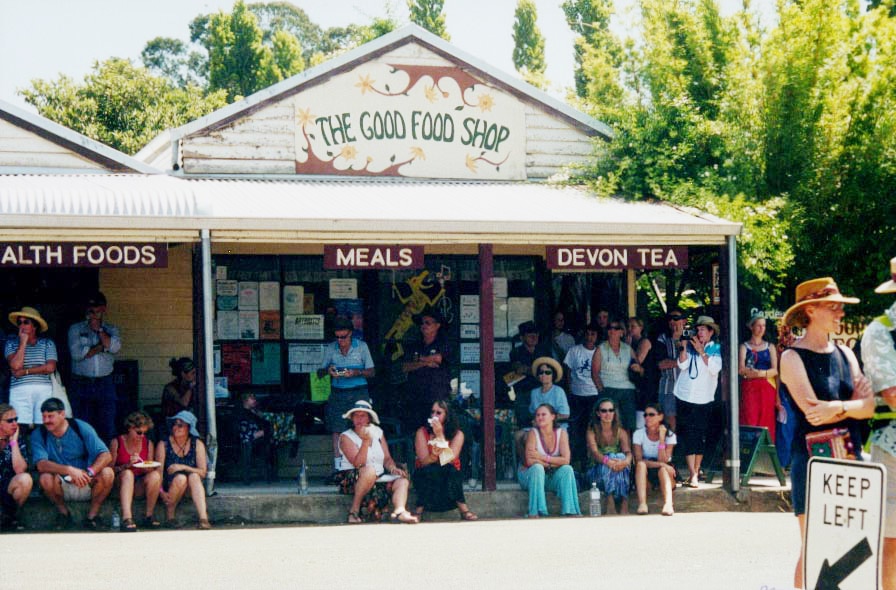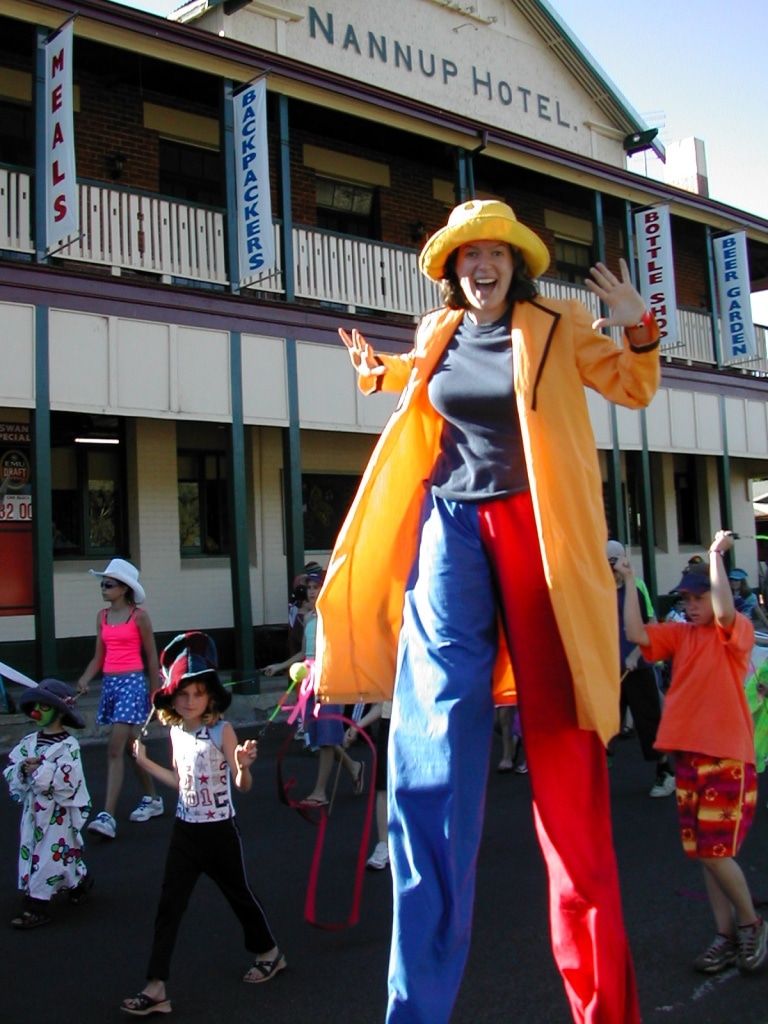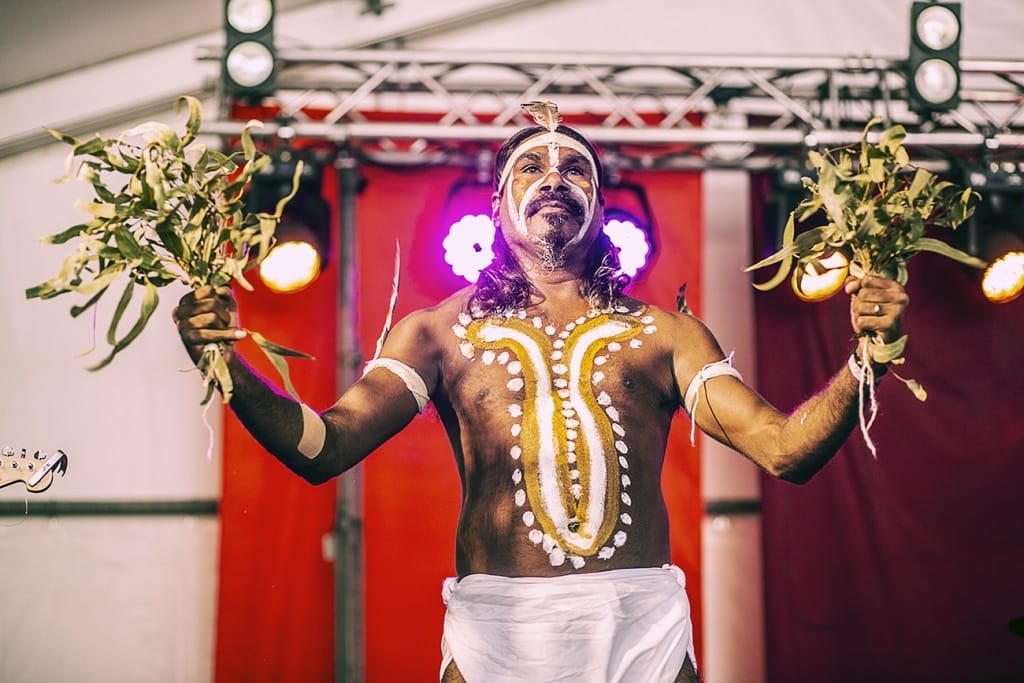Our Story

The Nannup Music Festival came from humble but passionate beginnings, born in the hearts of a group of Folk Music Lovers in the region, to share and celebrate their love of music and good company. The story of the Nannup Music Festival is truly a colourful evolution of not just music - in its ever growing and changing forms and genres - but of community contribution and participation, involving the generosity, input, spirit and dedication of a long list of people. It speaks to the heart of the people and the town of Nannup itself, with its welcoming sense of place in a unique and beautiful landscape, that this much-loved festival continues to grow and share its colour, character and charm, not to mention the music itself, over 35 years of challenges and change.
The first 10 years (by Bernie Wilborn)
The Nannup Music Festival, which occurs on the long weekend for Labour day in Western Australia – usually the first Monday in March – has its origins in the South West Folk Festival (SWFF). The SWFF was held on alternate years in Albany and Busselton on the Australia Day long weekend, until it went the way of many community organised events, due to burnout of the small number of volunteers who organised it year after year. The last SWFF occurred in Albany in 1987 (I think). In that same year, I moved from Perth to Nannup, and in 1988, with my wife, Rubela, began a Bed & Breakfast guest house, which was busy on the October long weekend – the weekend that the WA Folk Festival occurred in Toodyay – due to there being a boat race on the Blackwood River. This meant that I couldn’t get to Toodyay, and having lost the SWFF, I was missing out on Folk Festivals altogether.
In 1988, I had started the Nannup Music Club (NMC) in the front room of our house “Dry Brook”, and this grew to be an incorporated body with monthly performances at the newly renovated RSL Hall.
The NMC was popular with folkies from Perth, and one of the benefits (probably the only benefit!) for performers was a free night at “Dry Brook” B&B. Occasionally, performers were paid a “petrol allowance”, but usually they came and performed at their own expense. I had considered the idea of a festival in Nannup for a couple of years before I decided it might be possible, with the support the NMC was getting, to start a small festival along the lines of the SWFF. The NMC had been called a “Music” club rather than a “Folk” club with the aim of attracting locals, who would be more interested in Country, Blues, Jazz and Rock music than “finger in the ear” folk music. This didn’t really work as the content of the monthly performances hardly ever contained any of the other genres of music, so when the festival was named, it became the “South West Folk Festival”. The aim here was to have a festival which was not necessarily tied to Nannup, then if another town in the South West wanted to host it on alternating years, or take it over altogether, it would still have continuity. This didn’t happen, either, and later, the festival committee decided to change the name to the Nannup Music Festival.
The first festival was timed to coincide with the centenary celebrations commemorating the establishment of Nannup as a town in 1890, and so at Easter 1990, it all happened. The organisers up to the event were myself and Yvonne Harris in Nannup, with Barbara Stephenson and my sister Rosemary Robertson in Perth coordinating adult performers and children’s performers respectively. Approximately 700 people came to Nannup for the first festival, which was held in the existing venues – the Town Hall, the Lesser Hall, the RSL Hall and the Recreation Centre. As well, there were tourists who were here for the centenary celebrations, so the town was really busy. There were street stalls and street entertainment, and the whole thing was laid back and destined to be a success because every single person was determined to have a good time.
Another secret of success was that the festival has had the support of the whole town from the beginning, unlike Toodyay which took 10 years to get involved with and support the WA Folk Festival in their town. The whole festival cost me $700 up front, with a few hundred dollars in bills to pay, and at the end of it all, after I’d got my money back, there was around $300 left over for seed money for the next festival.
There wasn’t enough to pay most of the artists, however, although we had agreed to pay the Bunbury Band “The Caddam Wood Bush Band” with the P.A. supplied and operated by Terry Salom, the Bands Caller and Largerphone player, assisted by Peter Stanicic, the bands Bass player, doing all the stage set up.They were providing one of the 2 PA systems, as well as operating the sound desk and being the dance band for the bush dance they really earned their money – it must have worked out at 10 cents an hour! Likewise, John Belton had provided a PA and operated the sound desk for the weekend, so he was paid. Happily, ever since the first festival, all scheduled performers have been paid something towards expenses, and in recent times, at least minimum union rates.

Fortunately, plenty of volunteers were co-opted on the weekend, so most events ran smoothly, but it was obvious to Yvonne & myself that we could not continue like this, so we formed a SWFF committee for the following year. The festival has gone from strength to stength, and has now achieved its 10th anniversary without ever having made a loss – quite an achievement where folk festivals (particularly in WA) are concerned. No thanks to me as I dived for cover when the budget started to get into four figures!
The 10th Anniversary festival almost didn’t happen as the committee fell apart in the winter of 1998, so after non-participation for 6 festivals (I was living a long way away for most of those years), I re-joined the committee. Having missed out on the deadline for two important grants, it required frenetic activity to raise sufficient money to run the festival. Most of the credit for the success of this fund-raising activity must go to Ken Rawlings, who took over the chair at very short notice, and whipped the rest of us into shape. The end result was a festival which most people enjoyed, although some commented on the absence of a “big name”. Part of the problem was the need to “re-invent the wheel” as most of the committee were new at the job, and for myself, I had lost contact with the process.
Added to the usual cost of the festival was the need for reliable power for the street stalls, and $3,000 was spent providing 2 power distribution boards in the main street. Western Power let us down by not replacing an inadequate transformer until it had had a melt down, then it was replaced with a similar one which also melted down. Finally, at 3 pm on the Sunday, it was replaced with one which could handle the load. The net result, in financial terms, was a loss which was easily covered by the “safety net” of funds from the nine previous successful festivals, and we commenced planning for the 2000 festival with sufficient resources to ensure that the 11th Nannup Music Festival will be a great success.
So the festival that was set up with $700 and a great deal of volunteer help, so that I wouldn’t have to travel to Toodyay, has become one of the major events in the South West, and the biggest event of the year for Nannup Town.
30th Anniversary



